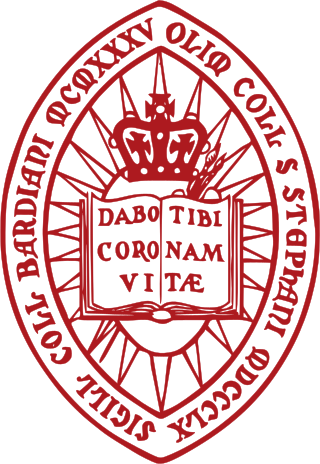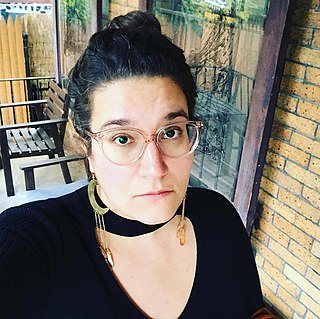Punctuation marks are marks indicating how a piece of written text should be read and,consequently,understood. The oldest known examples of punctuation marks were found in the Mesha Stele from the 9th century BC,consisting of points between the words and horizontal strokes between sections. The alphabet-based writing began with no spaces,no capitalization,no vowels,and with only a few punctuation marks,as it was mostly aimed at recording business transactions. Only with the Greek playwrights did the ends of sentences begin to be marked to help actors know when to make a pause during performances. Punctuation includes space between words and the other,historically or currently used,signs.
The colon,:,is a punctuation mark consisting of two equally sized dots aligned vertically. A colon often precedes an explanation,a list,or a quoted sentence. It is also used between hours and minutes in time,between certain elements in medical journal citations,between chapter and verse in Bible citations,and,in the US,for salutations in business letters and other formal letter writing.
The semicolon; is a symbol commonly used as orthographic punctuation. In the English language,a semicolon is most commonly used to link two independent clauses that are closely related in thought,such as when restating the preceding idea with a different expression. When a semicolon joins two or more ideas in one sentence,those ideas are then given equal rank. Semicolons can also be used in place of commas to separate items in a list,particularly when the elements of the list themselves have embedded commas.
In writing,a space is a blank area that separates words,sentences,syllables and other written or printed glyphs (characters). Conventions for spacing vary among languages,and in some languages the spacing rules are complex. Inter-word spaces ease the reader's task of identifying words,and avoid outright ambiguities such as "now here" vs. "nowhere". They also provide convenient guides for where a human or program may start new lines.

Bard College is a private liberal arts college in the hamlet of Annandale-on-Hudson,in the town of Red Hook,in New York State. The campus overlooks the Hudson River and Catskill Mountains within the Hudson River Historic District—a National Historic Landmark.

Martha Craven Nussbaum is an American philosopher and the current Ernst Freund Distinguished Service Professor of Law and Ethics at the University of Chicago,where she is jointly appointed in the law school and the philosophy department. She has a particular interest in ancient Greek and Roman philosophy,political philosophy,existentialism,feminism,and ethics,including animal rights. She also holds associate appointments in classics,divinity,and political science,is a member of the Committee on Southern Asian Studies,and a board member of the Human Rights Program. She previously taught at Harvard and Brown.
In English-language punctuation,a serial comma is a comma placed immediately after the penultimate term in a series of three or more terms. For example,a list of three countries might be punctuated as either "France,Italy and Spain" or "France,Italy, and Spain".

Lorraine Daston is an American historian of science. Director emerita of the Max Planck Institute for the History of Science (MPIWG) in Berlin,and visiting professor in the Committee on Social Thought at the University of Chicago,she is an authority on Early Modern European scientific and intellectual history. In 1993,she was named a fellow of the American Academy of Arts and Sciences. She is a permanent fellow at the Berlin Institute for Advanced Study.

Michèle Lamont is a Canadian sociologist who is the Robert I. Goldman Professor of European Studies and a professor of Sociology and African American Studies at Harvard University. She is a contributor to the study of culture,inequality,racism and anti-racism,the sociology of morality,evaluation and higher education,and the study of cultural and social change. She is the recipient of the Gutenberg Award and the Erasmus award,for her "devoted contribution to social science research into the relationship between knowledge,power,and diversity." She has received honorary degrees from five countries. and been elected to the British Academy,Royal Society of Canada,Chevalier de l’Ordre des Palmes Academiques,and the Sociological Research Association. She served as president of the American Sociological Association from 2016 to 2017.
The full stop,period,or full point. is a punctuation mark used for several purposes,most often to mark the end of a declarative sentence.
Emily Rolfe Grosholz is an American poet and philosopher. She is Edwin Erle Sparks Professor of Philosophy,African American Studies and English,and a member of the Center for Fundamental Theory / Institute for Gravitation and the Cosmos,at the Pennsylvania State University.
Jürgen Renn is a German historian of science,and since 1994 Director at the Max Planck Institute for the History of Science in Berlin.

Kevin B. Anderson is an American sociologist,Marxist humanist,author,and professor. Anderson is Professor of Sociology,Political Science and Feminist studies at University of California,Santa Barbara (UCSB). He was previously Professor of Sociology at Northern Illinois University,in DeKalb and Professor of Political Science,Sociology and Women's Studies at Purdue University.
Dagmar Schäfer is a German sinologist and historian of science. She is director of Department III,Artifacts,Action,Knowledge at the Max Planck Institute for the History of Science,Berlin. She is honorary professor for the history of technology,Technical University,Berlin;adjunct professor,Institute of Sinology,Freie Universität,Berlin,and Tianjin University (2018–2021). She was previously a guest professor at the school of history and culture of science,Shanghai Jiao Tong University. She was also the director of the Centre for Chinese Studies and held the professorial chair of Chinese studies,both at the University of Manchester.

Carmen Maria Machado is an American short story author,essayist,and critic best known for Her Body and Other Parties,a 2017 short story collection,and her memoir In the Dream House,which was published in 2019 and won the 2021 Folio Prize. Machado is frequently published in The New Yorker,Granta,Lightspeed Magazine,and other publications. She has been a finalist for the National Book Award and the Nebula Award for Best Novelette. Her stories have been reprinted in Year's Best Weird Fiction,Best American Science Fiction &Fantasy,Best Horror of the Year,The New Voices of Fantasy,and Best Women's Erotica.
Mark Lowell Wilson is an American philosopher and Distinguished Professor of Philosophy at University of Pittsburgh. Wilson has authored several books on the philosophy of mathematics.
Monica Moses Haller is an American photographer. She produced the book Riley and His Story with Riley Sharbonno and Matt Rezac,part of the Veterans' Book Project which she co-runs,both of which are about the U.S led wars in Iraq and Afghanistan. Haller is an Assistant Professor in the University of Minnesota's Art Department and a 2010 recipient of a Guggenheim Fellowship.
Sarah Elizabeth Igo is an American historian and author. She is the Andrew Jackson Chair in American History at Vanderbilt University.
The compound point is an obsolete typographical construction. Keith Houston reported that this form of punctuation doubling,which involved the comma dash (,—),the semicolon dash (;—),the colon dash,or 'dog's bollocks' (:—),and less often the stop-dash (.—) arose in the seventeenth century,citing examples from as early as 1622. More traditionally,these paired forms of punctuation seem most often to have been called (generically) compound points and (specifically) semicolon dash,comma dash,colon dash,and point dash.






